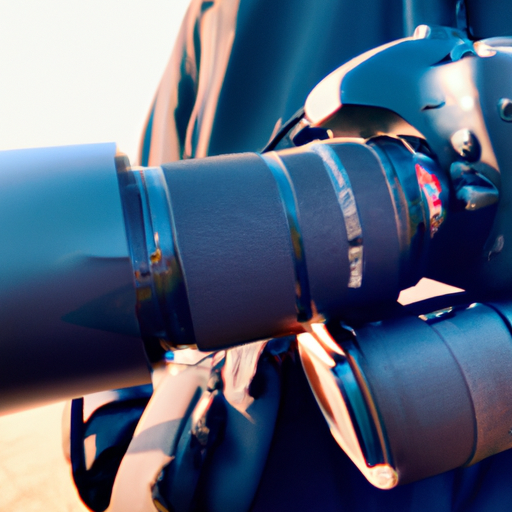Table of Contents
- Introduction
- How to Develop Your Photography Skills to Become a Professional Photographer
- What Equipment Do You Need to Become a Professional Photographer?
- How to Market Yourself as a Professional Photographer
- How to Find Clients and Build Your Photography Portfolio
- Tips for Setting Your Rates as a Professional Photographer
- Conclusion
«Capture Your Dreams – Become a Professional Photographer Today!»
Introduction
If you’re interested in becoming a professional photographer, you’ll need to have a passion for photography, a good eye for composition, and the technical skills to capture great images. You’ll also need to be willing to invest in the right equipment and take the time to learn the craft. With dedication and hard work, you can become a professional photographer and make a living from your passion. In this guide, we’ll discuss the steps you need to take to become a professional photographer.
How to Develop Your Photography Skills to Become a Professional Photographer
Photography is an art form that requires both technical skill and creative vision. To become a professional photographer, you must develop your skills and knowledge in both areas. Here are some tips to help you on your journey.
1. Learn the Basics: Before you can become a professional photographer, you must first learn the basics of photography. This includes understanding the fundamentals of exposure, composition, and lighting. Take a photography class or read books and online tutorials to gain a better understanding of these concepts.
2. Practice: Once you have a basic understanding of photography, it’s time to start practicing. Take your camera out and start shooting. Experiment with different settings and techniques to see what works best for you.
3. Invest in Equipment: Professional photographers need quality equipment to produce high-quality images. Invest in a good camera, lenses, and other accessories that will help you take better photos.
4. Develop Your Style: Every photographer has their own unique style. Take the time to experiment and find your own creative vision. Look at the work of other photographers for inspiration and practice different techniques to find your own voice.
5. Network: Networking is an important part of becoming a professional photographer. Connect with other photographers and industry professionals to build relationships and gain exposure.
By following these tips, you can develop your photography skills and become a professional photographer. With dedication and hard work, you can turn your passion into a successful career.
What Equipment Do You Need to Become a Professional Photographer?
To become a professional photographer, you will need a range of equipment. This includes a camera, lenses, lighting, and other accessories.
Camera: A professional photographer needs a high-quality camera that can take high-resolution images. Digital single-lens reflex (DSLR) cameras are the most popular choice for professional photographers. They offer a range of features, such as interchangeable lenses, manual settings, and the ability to take high-quality images.
Lenses: Professional photographers need a range of lenses to capture different types of images. These include wide-angle lenses for landscapes, telephoto lenses for wildlife photography, and macro lenses for close-up shots.
Lighting: Professional photographers need to be able to control the lighting in their images. This can be done with a range of lighting equipment, such as studio lights, flash units, and reflectors.
Accessories: Professional photographers also need a range of accessories to help them take the best possible images. These include tripods, filters, memory cards, and camera bags.
In addition to the equipment listed above, professional photographers also need to have a good understanding of photography techniques and editing software. With the right equipment and knowledge, you can become a professional photographer.
How to Market Yourself as a Professional Photographer

As a professional photographer, marketing yourself is essential to success. To ensure that you are reaching the right audience and making a lasting impression, it is important to create a comprehensive marketing plan. Here are some tips to help you market yourself as a professional photographer:
1. Create a Professional Website: A professional website is a great way to showcase your work and attract potential clients. Make sure to include a portfolio of your best work, contact information, and a blog to keep your audience updated on your latest projects.
2. Utilize Social Media: Social media is a great way to reach a wide audience and promote your work. Create accounts on popular platforms such as Instagram, Facebook, and Twitter and post regularly to keep your followers engaged.
3. Network: Networking is key to success in any industry. Attend photography events, join photography groups, and reach out to other photographers to build relationships and gain exposure.
4. Offer Special Deals: Offering special deals and discounts is a great way to attract new clients. Consider offering discounts for referrals or special packages for returning customers.
5. Invest in Advertising: Investing in advertising is a great way to reach a larger audience. Consider advertising on social media, in print publications, or on other websites.
By following these tips, you can effectively market yourself as a professional photographer and reach a wider audience. With a comprehensive marketing plan, you can ensure that your work is seen by the right people and that you are making a lasting impression.
How to Find Clients and Build Your Photography Portfolio
As a photographer, finding clients and building your portfolio is essential to success. It can be a daunting task, but with the right strategies, you can find the right clients and create a portfolio that will showcase your work in the best light.
First, create a portfolio website. This is the best way to showcase your work and make it easy for potential clients to find you. Include a selection of your best work, as well as a brief bio and contact information. Make sure to keep your portfolio up to date with your latest work.
Next, create a presence on social media. This is a great way to reach potential clients and build your network. Post regularly and engage with your followers. Share your work and use hashtags to reach a wider audience.
You should also consider joining professional photography organizations. These organizations can provide valuable resources and networking opportunities. They can also help you find potential clients.
Finally, attend networking events and workshops. These events are a great way to meet potential clients and build relationships. You can also learn from other photographers and gain valuable insights into the industry.
By following these steps, you can find clients and build your photography portfolio. With the right strategies, you can create a portfolio that will showcase your work and help you find success.
Tips for Setting Your Rates as a Professional Photographer
1. Research the Market: Before setting your rates, it is important to research the market to determine what other photographers in your area are charging. This will give you an idea of what is considered a fair rate for your services.
2. Consider Your Expenses: When setting your rates, you should also consider your expenses. This includes the cost of equipment, software, and other materials needed to provide your services.
3. Set Your Rates: Once you have researched the market and considered your expenses, you can set your rates. It is important to be realistic and competitive when setting your rates.
4. Offer Packages: Offering packages can be a great way to attract more clients and increase your income. Consider offering different packages with different levels of services and prices.
5. Negotiate: Be prepared to negotiate with clients. If a client is asking for a lower rate, be willing to negotiate and come to an agreement that is beneficial for both parties.
6. Be Flexible: Be flexible with your rates and services. Consider offering discounts for repeat clients or for larger projects.
7. Track Your Time: Tracking your time is important when setting your rates. This will help you determine how much you should charge for each project.
8. Review Your Rates: It is important to review your rates periodically to ensure that they are still competitive and in line with the market.
By following these tips, you can ensure that you are setting your rates as a professional photographer in a way that is fair and competitive.
Conclusion
Becoming a professional photographer requires dedication, hard work, and a passion for the craft. It is important to have a good understanding of the technical aspects of photography, such as lighting, composition, and camera settings. Additionally, it is important to have a good eye for detail and an understanding of the creative side of photography. Finally, it is important to network and build relationships with other photographers and potential clients. With the right combination of knowledge, skill, and dedication, anyone can become a professional photographer.

































